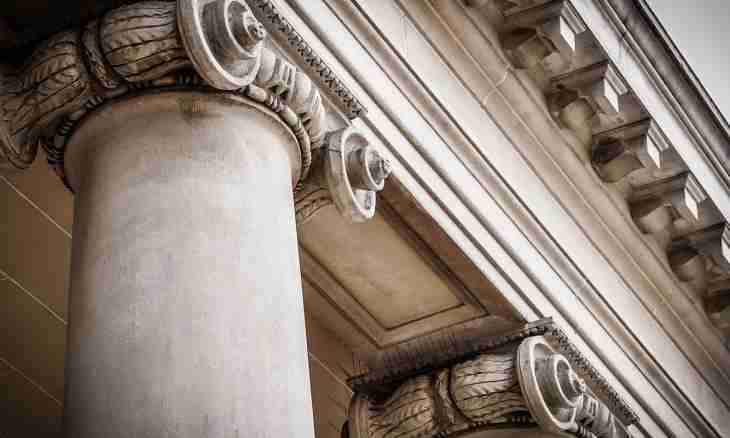Column – architecturally issued vertical support for the top parts of the building. In Ancient Greek architecture – most often the round column in cross section supporting a capital. The antique architecture differs in variety, and it is not obligatory to have art criticism education to distinguish types of the Greek columns.
Instruction
1. Columns took the key place in architecture of Ancient Greece. Greeks developed three architectural warrants which differed first of all with styles of columns: Doric, Ionic and Corinthian. Any warrant consists of actually column (sometimes put on base), the stilobat on which there are columns, and a capital on which the architrave (the bearing beam) with a decorative frieze and eaves in turn leans.
2. The Doric warrant developed during an antiquity era. Doric columns were decorated with vertical fillets and had under themselves no base, only the peripter leaning on stilobat from three steps. Columns peculiar round "pillows" - ekhina crowned. Above rectangular plates – abacuses were located.
3. The Ionic warrant arose a little later than Doric and differs in big grace and decorativism. The Ionic columns higher and thinner and lean on base. Trunks are decorated with 24 thin cuts – flutes. Above – a capital with two characteristic curls which are called volutes. From the point of view of ancient Greeks, the Doric warrant embodied the idea of courage, and Ionic – femininity.
4. The Corinthian warrant arose much later, during a classics era. The Corinthian columns are even more harmonious and higher in comparison with Ionic. They are by all means decorated with a four-front capital from two ranks leaves of the akant. The volutes which got in inheritance from the Ionic warrant are turned into the refined stylized escapes, leaves and short moustaches of grapes here.
5. As replacements of columns of the Doric warrant figures of Atlases and as an alternative to the Ionic columns – caryatids (female figures) were often used.
6. Ancient Greeks had also votivny columns. These are the separate columns representing votivny (that is sacred) objects. They were established at temples on sites specially allotted for this purpose.

